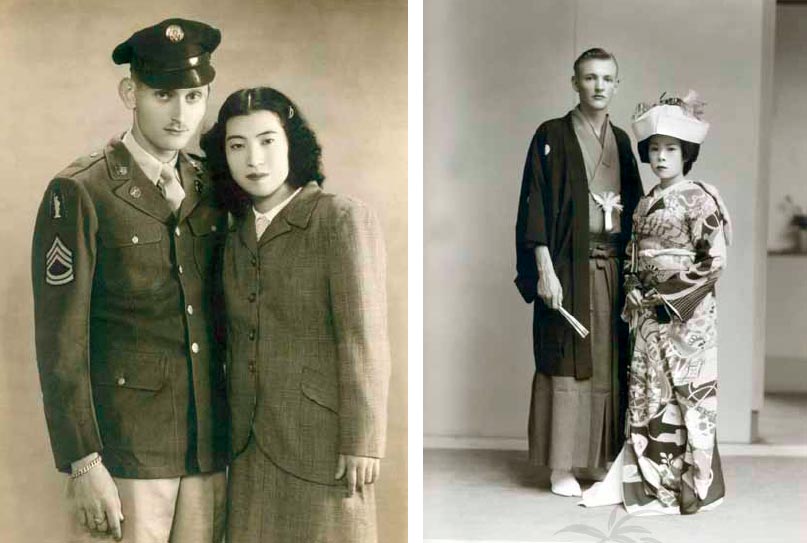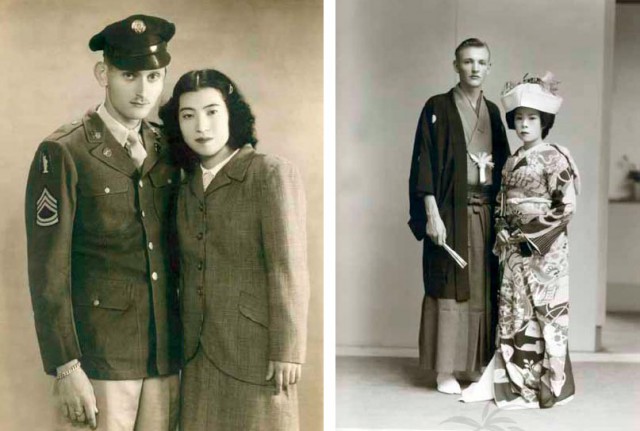World War Two saw a surge of marriages between Japanese women and American troops in the Pacific. Even though they were enemies thousands of Japanese women fraternized with American soldiers and many ended up getting married and moving back to the United States with their new-found husbands.
When the Japanese brides started their new life in America it wasn’t as easy as they thought it would be. One bride who experienced this was Hiroko Tolbert, who was 21 at the time that she moved to America with her new husband. When she was about to meet her new in-laws she decided to wear a traditional Japanese kimono, but it didn’t go down well with her husband or her new parents. She was told to change and the kimono was packed away never to be brought back out for many years to come.
Hiroko’s new family gave her a new name, Susie, and she had to get used to living on a farm with chickens and dirt everywhere. Hiroko says that back in Tokyo the city and country of Japan had been so devastated by the war that she couldn’t see a future there, so when she met American soldier Bill Tolbert she decided to make her future in America.
Hiroko’s family at home were devastated by her decision. She says that only her mother came to see her off when she was leaving Japan and she thought that she would never be returning. However her new American family also warned her and Bill that she would not be welcomed in America, since Japan had been the country’s enemy.
Over 100,000 Japanese-American citizens were held prisoner in camps along the West Coast of America after the Japanese attack on Pearl Harbor, ensuring that the United States entered World War Two. The government and general public were suspicious of anyone with Japanese connections and it was the biggest relocation of a segment of the country’s population ever.
At the end of the war, all of the camps were closed and the Japanese citizens were released, but suspicions still ran high among the American public for about another 10 years, the BBC News reports.
In general, Hiroko says that the rural setting where she lives in New York State was welcoming and she did become part of the community. While some new Japanese brides attended ‘bride schools’ to learn about the way of life in America.
In other parts of the US, where segregation was still rife, it was more difficult for Japanese brides to assimilate. One said that she didn’t know where to sit on the racially segregated bus, so she sat in the middle. Just like Hiroko, Atsuko Craft thought that America would give her a new and different life than in the bombed and devastated Tokyo.
Image Courtesy of Ohio.edu

